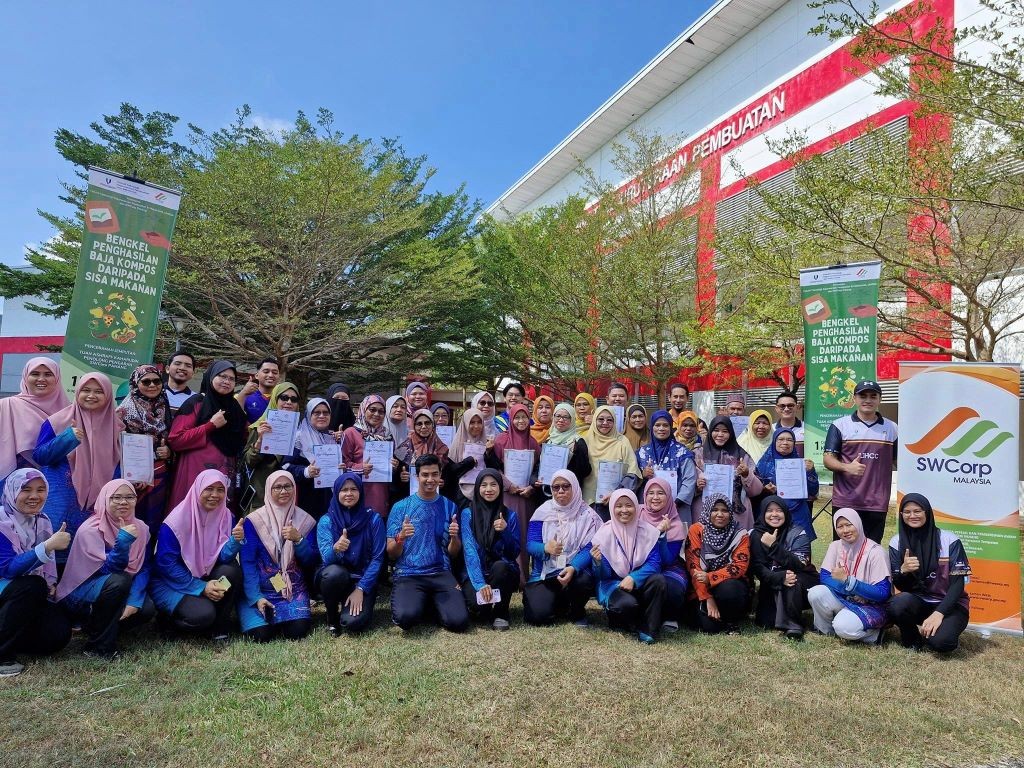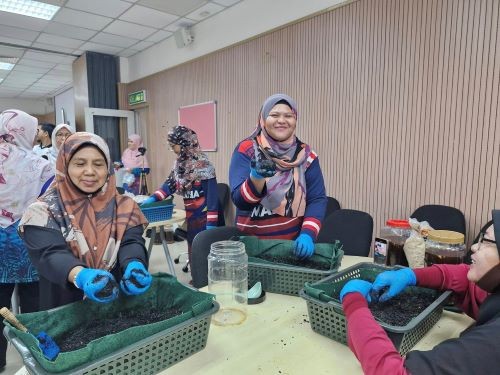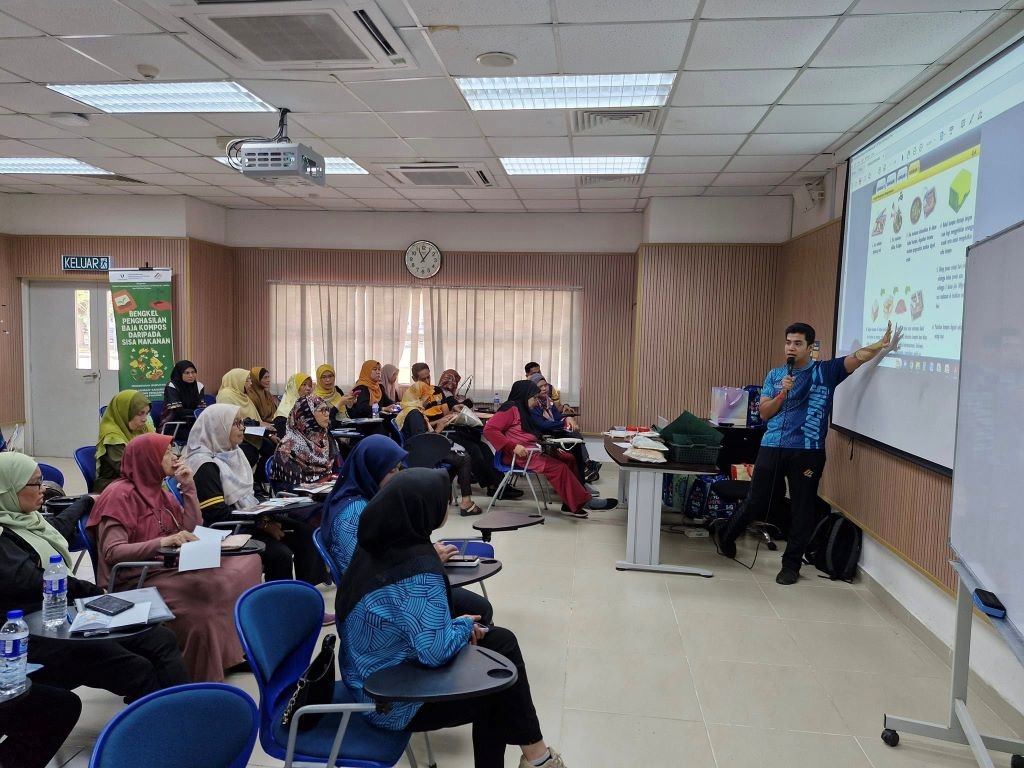COMPOSTING USING TAKAKURA TECHNIQUE
A total of 30 villagers around Pekan, Pahang, participated in the Compost Fertiliser Production Workshop from food waste at UMPSA Pekan, organised by the Faculty of Manufacturing and Mechatronics Engineering Technology (FTKPM), Universiti Malaysia Pahang Al-Sultan Abdullah (UMPSA) in collaboration with the Pahang Solid Waste Management and Public Cleansing Corporation (SWCorp).
Lecturer of FTKPM, who is also the programme director, Ts. Dr. Sarah Atifah Saruchi expressed her deepest appreciation to UMPSA for providing opportunities and supporting initiatives that benefit the local community.

The compost production method introduced in this workshop is the Takakura technique because the handling costs are lower and easy for the community to practice. The Takakura technique is a community-based composting technique that originated in Surabaya, Indonesia. It was developed by Japanese expert Koji Takakura in collaboration with the Surabaya City Government and Japan International Cooperation Agency (JICA). The method is designed to manage household organic waste effectively, especially in urban communities where space and resources are limited.
Key Features of the Takakura Method
- Simple and Low-Cost: Uses easily available materials such as baskets, rice husks, dried leaves, and microbial starter (fermented mixture of fruits and vegetables).
- Fast Composting: The microbial starter accelerates decomposition, making the process faster than traditional composting.
- Odourless and Hygienic: Proper aeration and microbial balance reduce foul smells and keep pests away.
- Community Friendly: Designed to be practiced at the household or neighborhood level, reducing waste sent to landfills.


The workshop is also designed to be easy to understand with a combination of theoretical and practical briefing sessions to ensure that each participant benefits fully from the programme.
In conclusion, the Takakura technique offers multiple benefits as a simple and effective waste management approach. It can reduce household waste by up to 50%, while simultaneously producing organic compost that enhances soil fertility. By doing so, it decreases dependency on municipal waste collection and the use of landfills, ultimately easing the burden on local authorities. Moreover, this method fosters community participation in sustainable waste management, empowering individuals and neighbourhoods to take active roles in protecting the environment.

